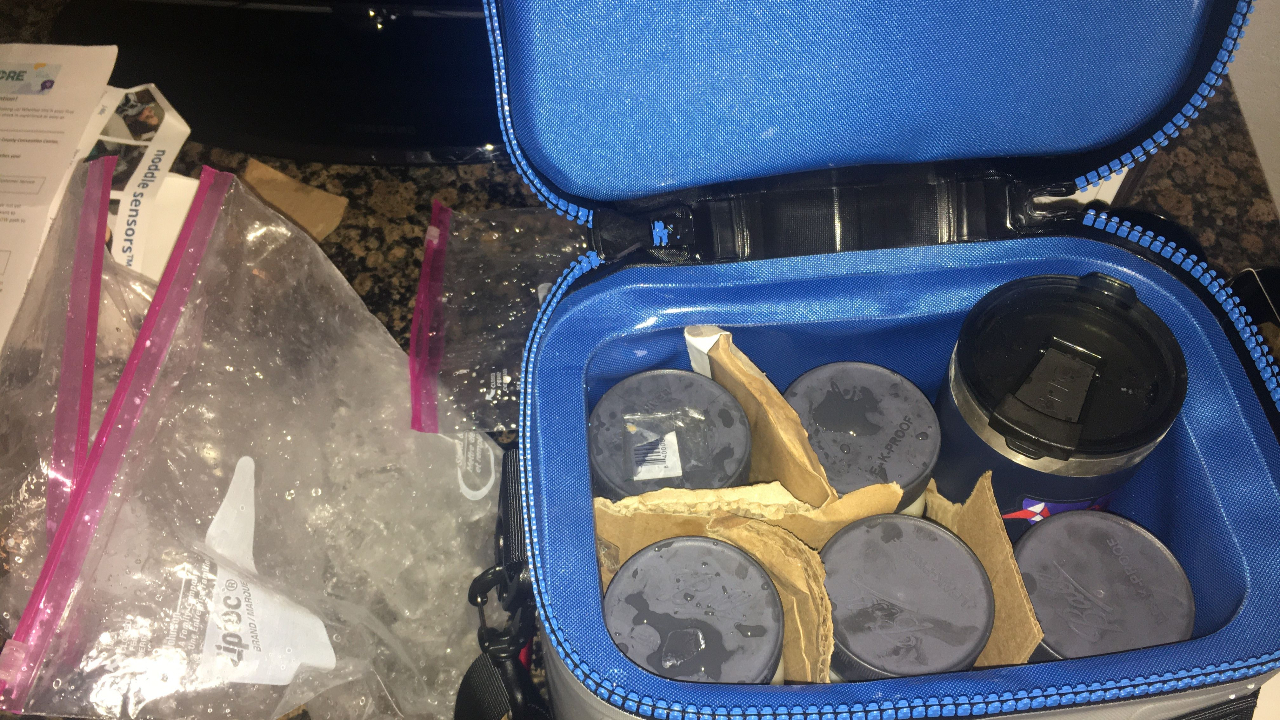10 Tips for Flying with Breast Milk
Apr 09, 2023
1. Carry a Copy of the TSA Guidelines
Print out and carry a copy of the official TSA Guidelines on Traveling with Breast Milk. TSA Guidelines
2. TSA 3-1-1 Liquids Rule
Understanding the basic TSA 3-1-1 Liquids Rule is helpful. This rule means that 1 person is allowed to bring 1 quart-sized bag containing liquids, aerosols, gels, creams and pastes through the checkpoint. The amount of the liquids in the bag is limited to 3.4 ounces (100 milliliters) or less per item.
3. Breast Milk is Exempt from 3-1-1 Rule
Breast milk, infant formula, toddler drinks, and baby/toddler food (to include puree pouches) are EXEMPT from the 3-1-1 Liquids Rule. Parents who are flying (with or without their child) can bring breast milk in quantities greater than 3.4 ounces (or 100 milliliters) onto the plane. Ahead of time, pack your breast milk in a separate carry-on. Leave plenty of time to get through security. Inform the TSA agent at the check point that you are carrying breast milk. (You do not need to declare breast milk if you are transporting it in your checked luggage.)
4. Breast Milk Frozen
At the security check point, if your breast milk is frozen, it can go through the screening device and only a visual inspection may occur.
5. Breast Milk Thawed or in Liquid Form
At the security check point, if your breast milk is thawed or in liquid form, the TSA agent may want to test it for explosives. You have the right to say no (see how that goes - good luck!)
Smart mama travel tip: if the TSA agent decides to handle or test each bag, ask them to put on a fresh pair of gloves.
6. Transport in Clear, Translucent Bottles
It seems there is inconsistency in TSA checking – some mothers report that the TSA agent wanted to check every single bag of breast milk and other mothers report the TSA agent waved them through. Therefore, consider putting the expressed breast milk into one or two clear containers (like a Nalgene container), or similar large containers (Mason jars with screw lids) instead of multiple storage bags. Why? It is easier to test two containers than multiple bags. Then when you get home you can divide the breast milk in the containers into storage bags or bottles.
Here is the wording from the TSA, “Although not required, to expedite the screening process, it is recommended that formula and breast milk be transported in clear, translucent bottles and not plastic bags or pouches. Liquids in plastic bags or pouches may not be able to be screened by Bottle Liquid Scanners, and you may be asked to open them (if feasible) for alternate screening such as Explosive Trace Detection and Vapor Analysis for the presence of liquid explosives. Screening will never include placing anything into the medically necessary liquid.”
7. The X-Ray Machine
This is directly from the TSA guidelines: “If you do not want the formula, breast milk, toddler drinks, and baby/toddler food (to include puree pouches) to be X-rayed or opened, please inform the TSA officer. Additional steps will be taken to clear the liquid and you or the traveling guardian will undergo additional screening procedures, to include Advanced Imaging Technology screening and additional/enhanced screening of other carry-on property.” Having said that, the FDA states that no damage is done to breast milk going through the X-Ray machine.
8. Freezer Packs
Perhaps the biggest problem with this whole security check point “event” lies with the freezer packs. If the freezer packs are thawed in any way, many TSA agents will throw the packs out (probably because the pack contains a liquid in a volume of more than 3.4 ounces and is not breast milk, formula, toddler drinks, and bobby/toddler food). If your packs are frozen you are all set. If your freezer packs are not frozen it could be trouble.
Smart mama travel tip:
- Freezer packs stay frozem longer than gel packs.
- As a back-up - if freezer packs are thrown out - bring several empty zip lock bags in your pocket, then once through security you can find some ice for the bags (say at a MacDonald’s) and you are all set.
9. Breast Pumps
According to the FDA a breast pump is a medical device. Per this ruling it does not count as your carry-on. However, each airline treats them differently. Best idea is to check with your airline before you travel. Your breast milk cooler does count as a carry-on.
Smart mama travel tip: always bring a hand pump in your carry-on bag - just in case.
10. Friendly Airports for Mothers Act
The Friendly Airports for Mothers (FAM) Act was signed into law in October 2018. This law requires all medium and large US airports to provide lactating mothers with private rooms with a table, a chair, an electric outlet and a door that locks. This explains why you may be seeing Mamava pods or Lactation Rooms in airports these days. Check out the Mamava locator app to see if there is a pod in the airport terminals you will be visiting.
These rules apply to the United States. If you are traveling internationally each country has different rules so you will need to do some more sleuth work,
Have a great trip!
Subscribe to our Blog
Join our mailing list to receive the latest blog posts, courses and updates from our team.
We hate SPAM. We will never sell your information, for any reason.

